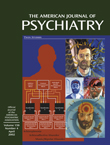Serotonin Syndrome and Atypical Antipsychotics
Mr. A, a 53-year-old man with a family history of chronic schizophrenia, was under treatment for major depressive disorder with schizotypal personality disorder. He was taking 45 mg/day of mirtazapine and 150 mg/day of tramadol, the latter for chronic back pain. Recently, he had been admitted to the hospital for a micropsychotic episode, for which treatment with olanzapine, 10 mg/day, had been initiated; he was discharged after a week. After 8 days of olanzapine treatment, Mr. A was found by the police wandering the streets in inappropriate dress and in a confused state, and he was readmitted to the hospital. He reported that he had not taken any substances of abuse or overdosed on any of his medications.Results of a physical examination revealed tachycardia (120 bpm), flushing and twitching of his face, tremors, myoclonus, hyperreflexia, and an ataxic gait. In an examination of mental status, Mr. A was found to be disoriented and agitated. He spoke with a stutter, had marked derailment, appeared perplexed, and had prominent perceptual abnormalities in the form of alterations in the color of objects and auditory hallucinations. The results of a comprehensive biochemical and hematological profile were unremarkable, as were a toxicology screen and a cranial computerized tomography scan. After Mr. A’s second admission, all medications were discontinued; there was a dramatic improvement in his clinical picture within 12 hours.
References
Information & Authors
Information
Published In
History
Authors
Metrics & Citations
Metrics
Citations
Export Citations
If you have the appropriate software installed, you can download article citation data to the citation manager of your choice. Simply select your manager software from the list below and click Download.
For more information or tips please see 'Downloading to a citation manager' in the Help menu.
View Options
View options
PDF/EPUB
View PDF/EPUBGet Access
Login options
Already a subscriber? Access your subscription through your login credentials or your institution for full access to this article.
Personal login Institutional Login Open Athens loginNot a subscriber?
PsychiatryOnline subscription options offer access to the DSM-5-TR® library, books, journals, CME, and patient resources. This all-in-one virtual library provides psychiatrists and mental health professionals with key resources for diagnosis, treatment, research, and professional development.
Need more help? PsychiatryOnline Customer Service may be reached by emailing [email protected] or by calling 800-368-5777 (in the U.S.) or 703-907-7322 (outside the U.S.).

